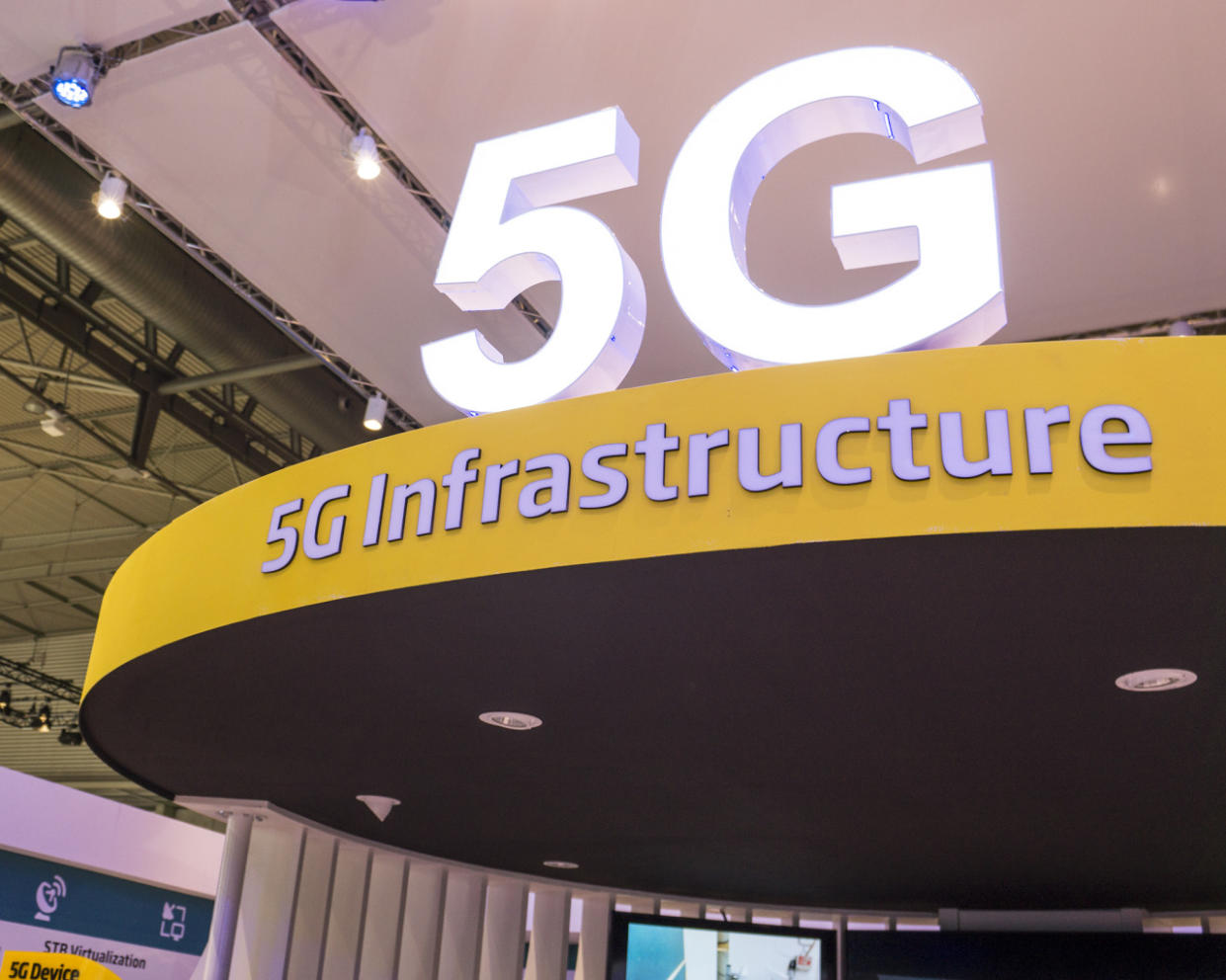Superfast 5G Wireless Service: On Its Way, but It’s Going to Take a While

BARCELONA, Spain – It looks like 5G is here! At least that’s what it looked like if you wandered around Mobile World Congress 2016 this week. Booths filled with information about the next-generation wireless standard — some even offering “demonstrations” of the technology — seemed to occupy more floor space even than new smartphones.
But the reality is that the successor to 4G cellular service is still, according to best estimations, around five years from connecting devices around the world.
So why, then, was 5G the talk of Barcelona’s big international tech conference now?

The idea of 5G needed no inventing, per se: We’ve all known for a while that “5” would come after “4.” But what the Next Generation Mobile Networks (NGMN) Alliance did shortly after last year’s MWC was release something called the “5G White Paper” to lay out what 5G wireless will look like in terms of speed. (Assuming, of course, that consumer companies and hardware vendors can cooperate.)
In that paper, the alliance announced the next mobile data standard should be capable of a healthy 1 gigabit per second (Gbps). Yep: With 4G speeds in the U.S. today averaging somewhere between 5 and 12 megabits per second (Mbps), 5G will look to improve upon its predecessor by up to 200 times.

You’re probably psyched to imagine how fast apps, video, and other data will download or stream over 5G. But the idea of imminent gigabit mobile data is even more exciting for wireless infrastructure companies such as Qualcomm and Cisco. (After all, they’ll be ones who’ll have to upgrade that infrastructure to the new standard.) This year’s Mobile World Congress gave these brands the first big international stage where they could trot out their moonshot ideas for the potential new tech. And trot they did.
Intel, for example, introduced a new 5G partnership with Ericsson to further advance the burgeoning Internet of Things (IoT).

Korean telecom company KT demoed virtual reality headsets that stream over 5G.
And Nokia had an exhibit demonstrating how 5G will play an important role in autonomous vehicles — since, you know, those things will probably be taking to the roadways of the world in full force not long after 5G goes mainstream.

There are varying opinions about when exactly that will be. AT&T has said that it hopes to start testing 5G technology on its network later in 2016, with a possibility of “limited commercial availability this year.” Meanwhile, Nokia CEO Rajeev Suri said at an MWC press conference this week, “2020 is probably when we’ll see global volume deployments [of 5G].”

So while focusing so much on 5G now might seem silly, what it really demonstrates is an earnest, forward-thinking industry eager to deploy the next wireless standard ASAP. The result could be that we get to enjoy using the next, fastest wireless technology much sooner than we originally might have thought.
And even if not, when it comes to Mobile World Congress, we’ll take pie-in-the-sky 5G exhibits over more smartwatches any day.
Email me at danbean@yahoo-inc.com. Follow me on Twitter @danielwbean. And for all the hottest tech news and gadget reviews, follow Yahoo Tech on Facebook!

